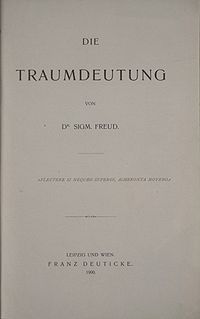It’s true that Frye used Freud in a variety of ways, but that does not mean that their “models” or outlook were similar. As I noted earlier, their attitudes toward human desire were very different.
In Anatomy of Criticism, Freud re-creates a key concept in Freud’s great book, The Interpretation of Dreams (and elsewhere), namely: displacement. This term is a fascinating illustration of the way Frye’s thinking worked, the way he absorbed and adapted earlier conceptions.
In Freud, “displacement” is a technique of dreams: dreams shift emotional emphasis from important to unimportant objects. Intense emotion is thus “cathected” from its actual inspiration to an object that stands in for it, that “displaces” it, in order to conceal from the conscious mind the source of anxiety (or desire, desire being normally the cause of anxiety in Freud). Neurosis does the same thing: the emotion causing the neurosis is “displaced” from its real object to things that are irrelevant or connected by some chain of association.
Frye picks up the term and changes its meaning. In Frye, “displacement” refers to literature’s habit of adapting mythical forms to standards of plausibility or accepted morality. In Anatomy of Criticism [150, Princeton edition] he illustrates displacement with an ingenious exposition of the use of ghosts. Displacement is a function of the modes he outlines in the first essay—the kind of things you can have in a story is determined by the kind of world assumed in the story, and that world is indicated by the powers of the protagonist. Displacement in this sense is a vital and powerful conception, showing how mythical formulas are adapted and reappear in realist texts, but in displaced form. Instead of a man turning into a bat and flying away, you might have him associated with bats in some significant way, or wishing he could fly away with bats (my example — OK, Bram Stoker’s example).
Frye’s use of “displacement” gave the term new life. From Frye, it went on its merry way in literary theory, being a natural sort of concept for deconstruction, where what is is not and what is not is what is, and “dis placement” is also “placement”.
My book 13 Ways of Looking at Images deals with Freud’s conceptions at length. The Interpretation of Dreams is one of the great books, when it is detached from Freud’s psychoanalytic apparatus. In this respect, I think my adaptation of Freud is close to the kind of method Frye worked with.

